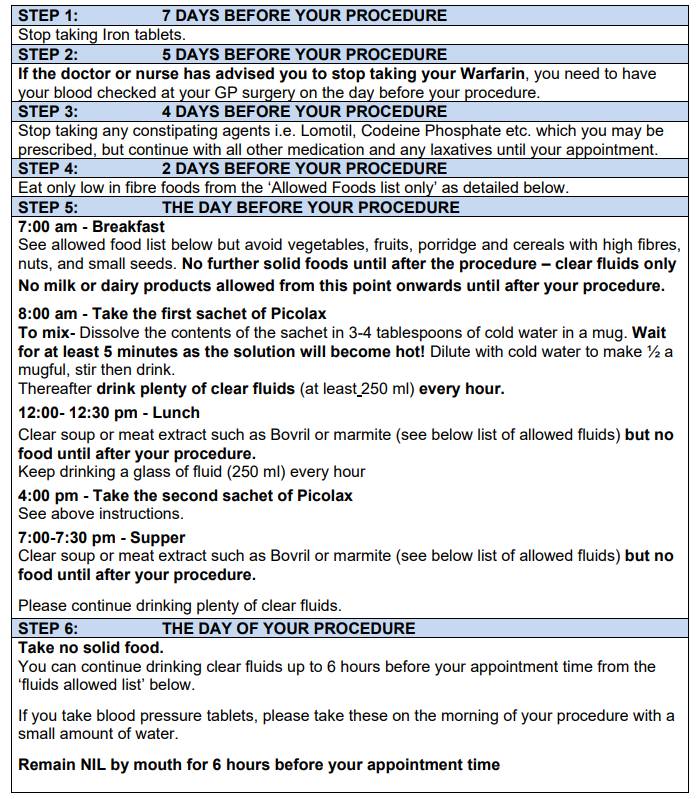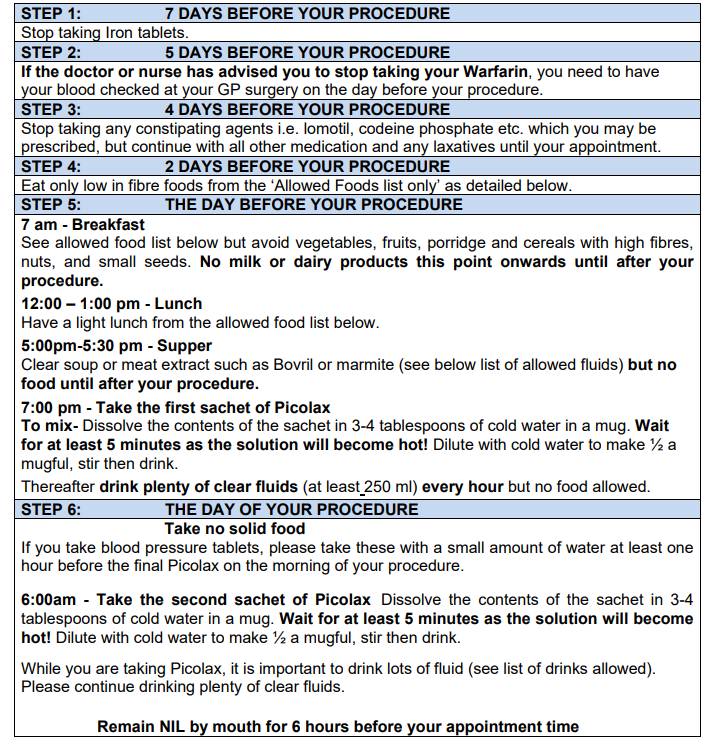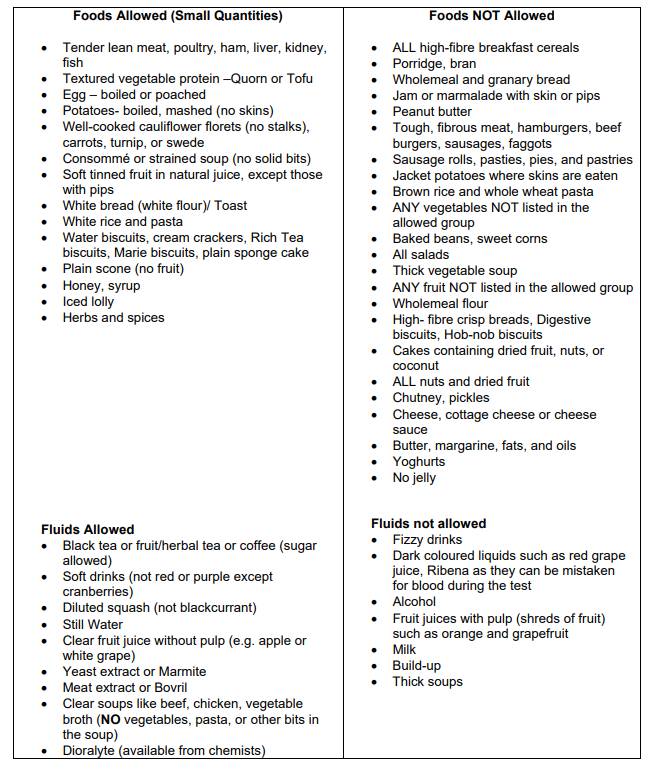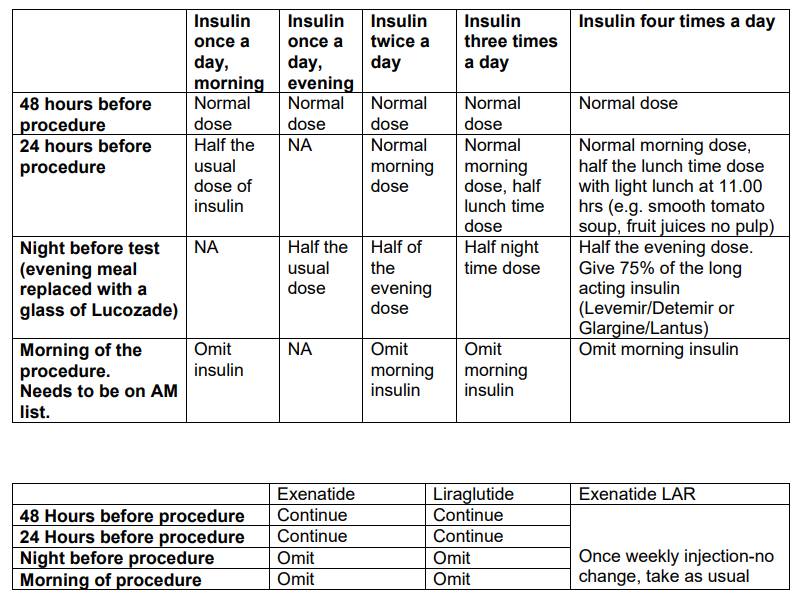How to take Picolax (Double Procedure)
Please note, this page is printable by selecting the normal print options on your computer.
Always read the patient information leaflet enclosed with your Picolax sachets.
Do not take if you are allergic to any of the ingredients. These instructions may differ slightly from the manufacturer’s information leaflet, however, please follow this schedule if your bowel investigation is being performed in the Endoscopy Unit.
This medicine is for you and must not be passed on to anyone else.
How to store Picolax
• Keep out of sight and reach of children
• Store in the original package and at room temperature (not above 25˚C)
• Do not take the medicine after the expiry date on the packet
Return any old and unused medicines to the pharmacist.
What to expect when you take Picolax
Picolax is a medicine to clear out your bowel before your flexible sigmoidoscopy or colonoscopy. It will make you have frequent bowel movements starting within 3 hours of the first dose. You are
advised to stay at home if possible or somewhere where you have access to a toilet, without embarrassment. As you may feel hungry, you are also advised not to undertake any heavy or strenuous work.
Side-effects (rare with Picolax)
• Abdominal pain
• Nausea
• Anal pain
Adverse reactions
• Rash, itching, wheezing, swelling, difficulty breathing
• Vomiting
• Prolonged abdominal pain
If any of the above occur; you must stop taking the Picolax and seek medical help from:
Endoscopy Department Tel. 01908 996460
NHS 111 Tel. 111
Your G.P
PICOLAX Treatment Plan for MORNING Appointments

PICOLAX Treatment Plan for AFTERNOON Appointments

‘ALLOWED’ FOODS AND DRINK LIST

Information for patients with diabetes
Treatment by tablets and/or insulin
You should inform the Endoscopy admissions office about your diabetes so that they can arrange for an early morning procedure time. Adjusting your diabetes medication to prevent hypoglycaemia (low blood sugar level). You will need to adjust your treatment the evening before and the morning of your procedure to reduce the risk of hypoglycaemia. As a result, your blood sugar control may be a little higher than usual. This is only temporary to maintain your blood sugars through the procedure and you should be back to your usual level of control within 24-28 hours after the procedure. If you have and questions or concerns about adjusting your dosage, please contact your Diabetes Specialist Nurse well in advance for further advice.
Carrying Glucose Monitoring
If you usually test your blood sugar levels, check them as usual on the morning of the procedure and carry your equipment with you to the appointment. If you do not usually check your blood sugar levels, please do not worry, they will be checked when you arrive for the procedure. People on tablets for diabetes: The day before the colonoscopy/sigmoidoscopy – clear fluids only after 11am. Aim to replace your usual carbohydrate intake from the list of permitted clear fluids. You may have sugary fluids or clear fruit juice to replace your usual carbohydrates.

If on glibenclamide/ chlorpropamide or tolbutamide, change to gliclazide by obtaining a prescription from the GP.
• Test blood glucose 4-6 hourly
• Treat ‘hypos’ with a glass of Lucozade (125 ml). No Carbohydrate.
People on insulin for diabetes: The day before the colonoscopy/sigmoidoscopy- clear fluids only after 11am.
Aim to replace your usual carbohydrate intake from the list of permitted clear fluids. You may have sugary fluids or fruit juice to replace your usual carbohydrates.

Essentials:
• SHOULD BE FIRST ON MORNING LIST ONLY
• 24 hours before the procedure, start testing blood glucose 2-4 hourly.
• Treat ‘hypos’ with a glass of Lucozade (125ml) no carbohydrate as on bowel prep.
• Test blood glucose before procedure.
• Bring a sandwich to eat after the procedure.
If you have concerns about adjusting your insulin dosage, please contact your Diabetes Specialist Nurse well in advance of the procedure.
